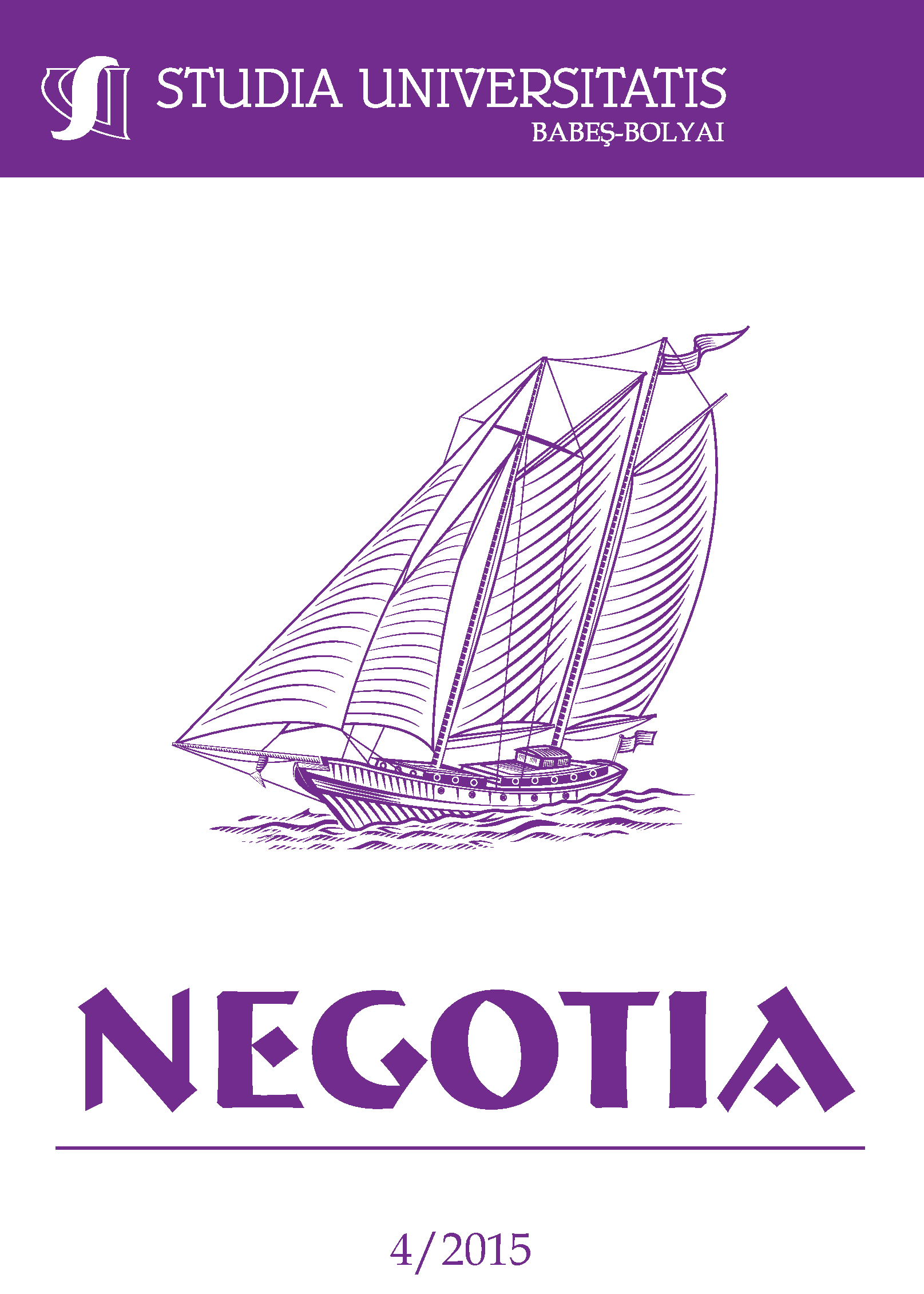SMES GROWTH AND HUMAN CAPITAL INVESTMENTS (THE CASE OF POLAND)
Keywords:
Human resources, Human Capital, Competitive advantage, Firm Goal, Entrepreneurship.Abstract
Small and medium enterprises (SMEs) face more threats and challenges than their larger counterparts. [It] This situation is caused mostly by the limited access to resources or their unavailability. That is why SMEs have to manage carefully their resources, plan growth and calculate investments in order to achieve the highest possible return. Many authors claim that one of the most valuable resource for any firm is the human capital (HC); it may be the source of competitive advantage. This article touches upon the relationship between SMEs growth and human capital investments. The main question is whether there is any relationship between the stage of SMEs growth and investments in HC. Do investments in HC support SMEs performance on every stage of their growth? The results of the research conducted on 219 Polish SMEs. On the basis of conducted analysis it can be stated that the share of investments in HC vary in subsequent stages. Moreover HC seems to impose SMEs’ performance only in the mature stages, when organisations are well developed and have achieved an appropriate market position.
References
Adizes, I. (2004): Managing corporate lifecycles,: Adizes Institute Publications, Carpinieria
Barney, J.B. (1991), “Firm resources and sustained competitive advantage”, Journal of Management, Vol. 17, No. 1, pp. 99-120.
Becker, G.S. (1962), “Investment in human capital: A theoretical Analysis”, The Journal of Political Economy, volume 70, Issue 5, part 2, pp. 9-49.
Churchil, N.C., Lewis, V.L. (1983), “The five stages of small business growth”, Harvard Business Review, Vol. 61, No. 3, pp. 30-50.
Eisenhardt, K.M., Martin, J.A. (2000), “Dynamic capabilities: what are they?”, Strategic Management Journal, No. 21, pp. 1105-1121.
Flamholtz, E., (1995), “Managing Organizational Transitions: Implications For Corporate and Human Resource Management”, European Management Journal, Vol. 13, No. 1, pp. 39-51.
Flamholtz, E.G., Aksehirli, Z. (2000), “Organizational Success and failure: an empirical test of a holistic model”, European Management Journal, Vol. 18, No. 5, pp. 488-49.
Flamholtz, E.G., Randle, Y. (2007), “Successful organizational development and growing pains”, Management Online Review,
http://www.morexpertise.com/download.php?id=58 (Accessed on August 31st 2015).
Floren, H. (2011), “Organising small-firm growth”, ed. Hörte, S-A., in: Research on Technology, Innovation and Marketing Management 2009‐2011: Introducing the Research Area of Innovation Science, Halmstad, pp. 117-133.
Gabrielsson, M., Kirpalani, V.H.M., Dimitratos, P., Solberg, C.A., Zucchella, A. (2008), “Born globals proposition to help advance the theory”, International Business Review, Vol. 17, No. 4, pp. 385-401.
Galbreath, J. (2005), “Which resources matter the most to firm success? An exploratory study of resource-based theory”, Technovation, No. 25, pp. 979-987.
Greiner, L.E. (1998), “Evolution and revolution as organizations growth”, Harvard Business Review, May-June.
Hanks, S.,C. Watson, E. Jansen and G. Chandler (1993), “Tightening the life-cycle construct: A taxonomic study of growth stage configurations in high-technology organisations”, Entrepreneurship Theory and Practice, Vol. 18, No.2, pp. 5-29.
Kostova, T., Roth, K., (1999), “Transnational transfer of strategic organizational Practices: A Contextual perspective”, Academy of Management Journal, Vol. 24, No. 2, pp. 308-324.
Lepak, D.S., Snell S.A. (1999), “The human resource architecture: toward a theory of Human Capital allocation and development”, Academy of Management Review, Vol. 24, No. 1, pp. 31-48.
Lipka A. (2010), Inwestycje w kapitał ludzki organizacji w okresie koniunktury i dekoniunktury, Oficyna a Wolters Kluwer business, Warszawa.
Maritan, C.A. (2001), “Capital Investments as investing in organizational capabilities: an empirically grounded process model”, The Academy of Management Journal, Vol. 44, No. 3, pp. 513-531.
McMahon, R.G.P. (1998), “Stage Models Of SME Growth Reconsidered”, Research Paper Series: 98-5, The Flinders University Of South Australia, ISSN:1441-3906, on-line version available on
http://www.flinders.edu.au/sabs/business/research/papers/98-5.doc (Accessed August 31st 2015).
Miller, D, Friessen, P.H. (2014), “A longitudinal Study of the corporate lifecycles”, Management Science, Vol. 30, No .10 pp. 1161-1183.
Mintzberg, H. (1984), “Power and Organizational life cycles”, Academy of Management Review, Vol. 9, No. 2, pp 207-224.
Pauli U. (2014), The role of trainings in small and medium enterprises growth, Cracow University of Economics Press, Cracow.
Patel, P.C., Cardon, M.S. (2010), “Adopting HRM practices and their effectiveness in small firms facing product-market competition”, Human Resource Management, Vol. 49, No. 2, pp. 265– 290.
Patel, C.P., Conklin, B. (2012), “Perceived Labor Productivity in Small Firms—The Effects of High-Performance Work Systems and Group Culture Through Employee Retention”, Entrepreneurship Theory and Practice, Vol. 36, Iss. 2, pp. 205-235.
Pike, S., Roos, G., Marr, B., (2005), “Strategic management of intangible assets and value drivers in R&D organisations”, R&D Management, Vol. 35, No. 2, pp. 111-124.
Pocztowski, A. (2007). Human Resources Management. Strategies-Processes-Methods, PWE, Warszawa.
Quinn, R.E., Cameron, K., (1983), “Organizational life cycles and shifting criteria of effectiveness: some preliminary evidence”, Management Science, Vol. 29, No. 1, pp. 33-51.
Razouk, A.A. (2011), “High-performance work systems and performance of French small-and medium-sized enterprises: examining causal order”, The International Journal of Human Resource Management, Vol. 22, No. 2, pp. 311–330.
Schultz, T.W., (1961), “Investment in human capital”, The American Economic Review, Vol. 51, No. 1, pp. 1-17.
Scott, M., Bruce, R. (1987), “Five stages of growth in small business”, Long Range planning, Vol. 20, No 3, pp.45-52.
Sheehan, M. (2013), “Human resource management and performance: evidence from small and medium sized firms”, International Small Business Journal, Vol. 32, No. 5, pp. 545-570.
Vlachos, I.P, (2009), “The effects of human resource practices on firm growth”, International Journal of Business Science and Applied Management, Vol. 4, Issue 2, pp. 17-34.
Downloads
Published
How to Cite
Issue
Section
License
Copyright (c) 2015 Studia Universitatis Babeș-Bolyai Negotia

This work is licensed under a Creative Commons Attribution-NonCommercial-NoDerivatives 4.0 International License.






